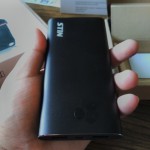Letters on Intel chipset numbers: What the heck are those?
Did you ever think about the letters on Intel’s chipset numbers? You may think that these are numbers to give the product a catchy model number, but no. Every single letter used is of some significance to the chipset. These letters not easy to memorize simply because there are so many. But fear not, I’m going to explain the mystery behind the letters.
The number scheme is different for laptop and desktop chipsets.
Let us first start with laptop chipsets.
The letter K is the most common letter in chipset numbers. K stands for overclocking. It means that chipsets which come with the letter K, have unlocked multipliers and can be easily overclocked if placed in a supported motherboard. Non-K chipsets have limited overclocking functionality. So, make sure to look for K chipsets system tweaking is your goal. Intel hardly ever mentions this: HK on laptops essentially means the same as K.
So what is H? H stands for High-Performance Graphics for Intel notebooks. The H letter is mostly seen on Intel Xeon mobile workstations. HQ also means the same, but the additional Q means quad-core.
Letters U and Y stand for ultra-low power chipsets. U stands for Ultra Low Power which can also be seen on many high-end laptops, for example, the LG Gram which lasts 8 hours on a single charge. Y stands for Extremely Low Power. Why not E? because E stands for ECC memory. Some Y CPU TDP are less than 4.5W.
Intel also has M chipsets which stand for Mobile Workstation but it is only limited to Xeon chipsets.
Now lets move on to Desktop chipsets.
The letter T is used mostly in all-in-one PCs. These processors consume low power like laptop U CPUs.
The letter P stands for no integrated graphics. If you use a P processor, you will need to buy and add a discrete graphics card. The G stands for Radeon RX VEGA graphics.
The letters R and C stand for high-end workstations (like H in mobile chipsets) and unlocked multiplier for overclocking (like K in mobile chipsets) respectively.
Finally, we come to the most dramatic letter X. It stands for most high-end processors, for e.g., the newest Intel Core i9-7980 XE (Extreme Edition) Processor. These chipsets are equipped with more cores and demand higher prices, not to be confused with E which stands for ECC memory.
So, I hope you have a fair idea of Intel’s chipset numbering systems. There are many more letters which I will explain in my upcoming articles.
About the author:

I’m Biplab Das, a technical writer, tech YouTuber, blogger, ICT tutor and a part time website developer. People say smartphones are boring these days, but I think everyone is beginning to take this wonderful technology marvel for granted. Please don’t forget to subscribe to my YouTube channel MoboMotion.

















